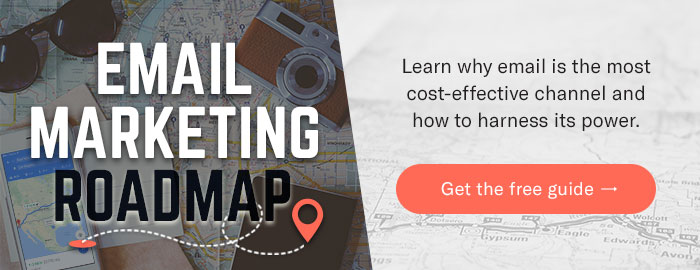 Two elements that are crucial for successful email marketing campaigns are subject lines and open rates. It’s a horrible feeling to put hours of work into an email only to see terribly low open rates. Strong subject lines get you in the inbox and entice users to open your emails and learn more. If no one is reading your emails, it’s tough to see the true benefit of a long-term email marketing strategy.
Two elements that are crucial for successful email marketing campaigns are subject lines and open rates. It’s a horrible feeling to put hours of work into an email only to see terribly low open rates. Strong subject lines get you in the inbox and entice users to open your emails and learn more. If no one is reading your emails, it’s tough to see the true benefit of a long-term email marketing strategy.
Earlier, I wrote a post about email deliverability and how complex it can be to continue running a successful email marketing program. With email deliverability, the goal is to continually get your email accepted by the receiving email server.
Another important metric we track at OutboundEngine is the inbox rate, which is how often the email we send gets into inboxes. But just because you get an email into someone’s inbox doesn’t mean that they’ll necessarily open it. Email open rates are something that all email marketers should measure as well. The good marketers will then take that information and apply it to future campaigns to continually improve their performance.
What Are Email Open Rates?
By definition, the open rate is the measure of how many people opened the emails that ended up in inboxes. This is one of the more important metrics for email marketers because it directly correlates with how successful their campaigns are performing.
How Are Open Rates Calculated?
There are two different calculations for open rates. The disingenuous way some companies calculate open rates is by taking the number of times an email is opened (which can be multiple times from one person) and then dividing it by the number of emails sent. Calculating open rates this way will inflate the end result and give an invalid measure.
The other way to calculate open rate percentage is to take the number of times an email is opened (once per person at most) and divide that by the number of emails sent. This is the way we calculate open rates for our customers at OutboundEngine.
Open Rates Are Increasingly Important
Individuals have high open rates for varied reasons. Maybe their audience really trusts that sender and always open emails from that person. Perhaps the subject line was so compelling, they had to read more. Whatever the reason might be, a good open rate is always something to aim for.
With the introduction of more intelligent inboxes like Gmail’s Priority Inbox and tabs features, the end user is playing an increased role in highlighting which emails are more important to them than others. Simply put, the more a user opens an email from a specific sender, the higher future emails from that sender will rank in their inbox.
Why Are Email Subject Lines Important?
The role of the subject line in email marketing is two-fold. Subject lines are what entice people to open an email while giving them enough information to pique their interest, but without giving away the punch line. The other role of the subject line that might not be as well-known is how it helps to weed out spam emails.
Spam filters have a list of keywords, phrases and text styling triggers that scoop up bad emails and either send them to the spam or bulk folder, or they reject the email completely. We’ve covered the top words that can get you in trouble before, and it’s something that we continually monitor for the success of our clients. Some of the worst offenders on this list include:
- !!!
- $$$
- 100% free
- Act now!
- ALL CAPS
- FREE
The best subject lines are ones that are compelling enough to get someone to open the email, have a low character count and that don’t give everything away up front. Writing the perfect subject line is challenging when you have to operate within the confines of trigger words and also write creatively enough to keep your open rates high.
There are a lot of variables that make for successful email marketing. Getting the emails delivered is the first crucial step. But getting those emails opened by the end users is the next milestone of a good email marketer. The time of day sent and the trustworthiness of the sender play a role in getting good open rates, but email subject lines are the call to action that really drive results. Without strong subject lines, even the best emails might go unread.


![Better Email Etiquette Equals Better Marketing Results [16 Rules]](https://www.outboundengine.com/wp-content/uploads/shutterstock_411184843-1-400x250.jpg)

